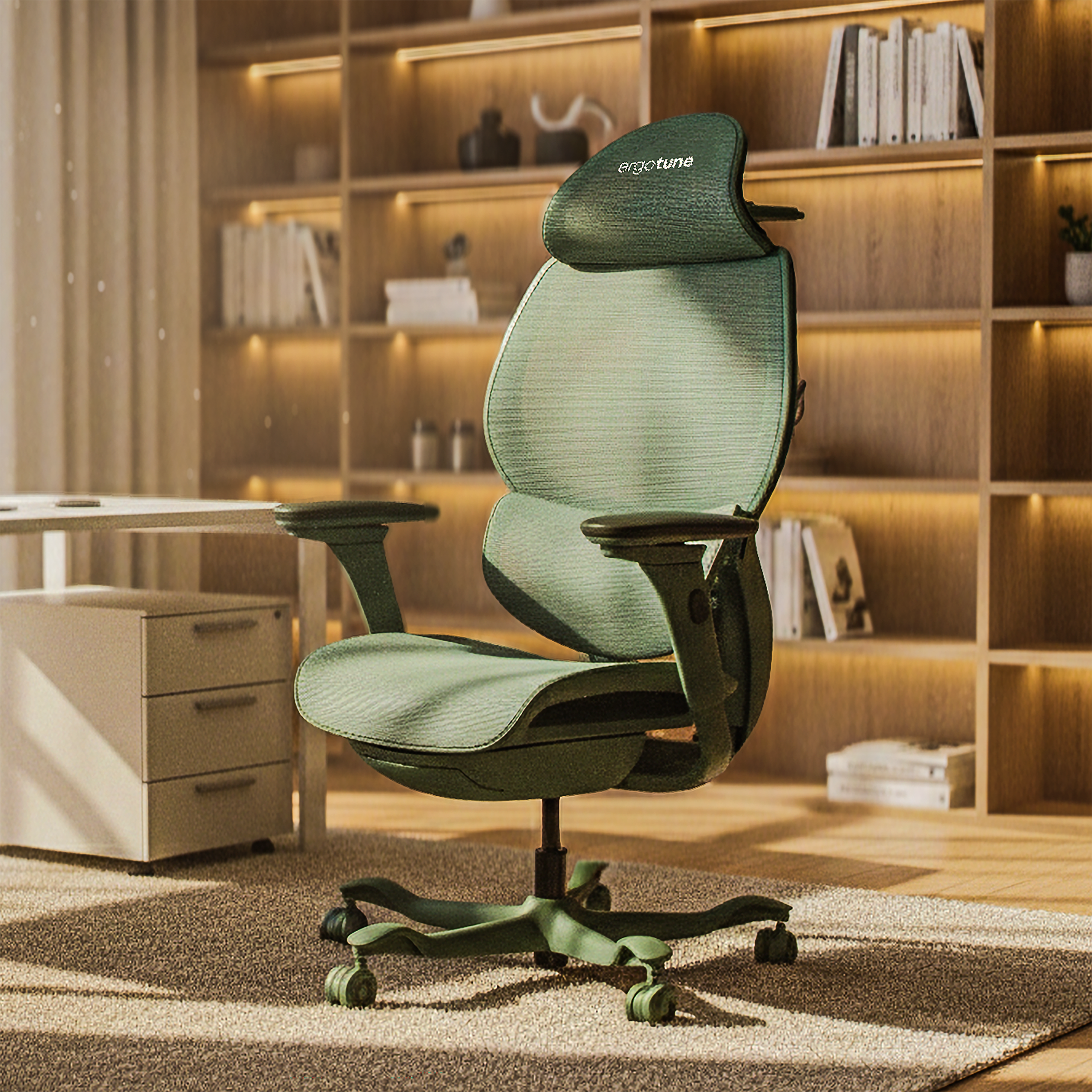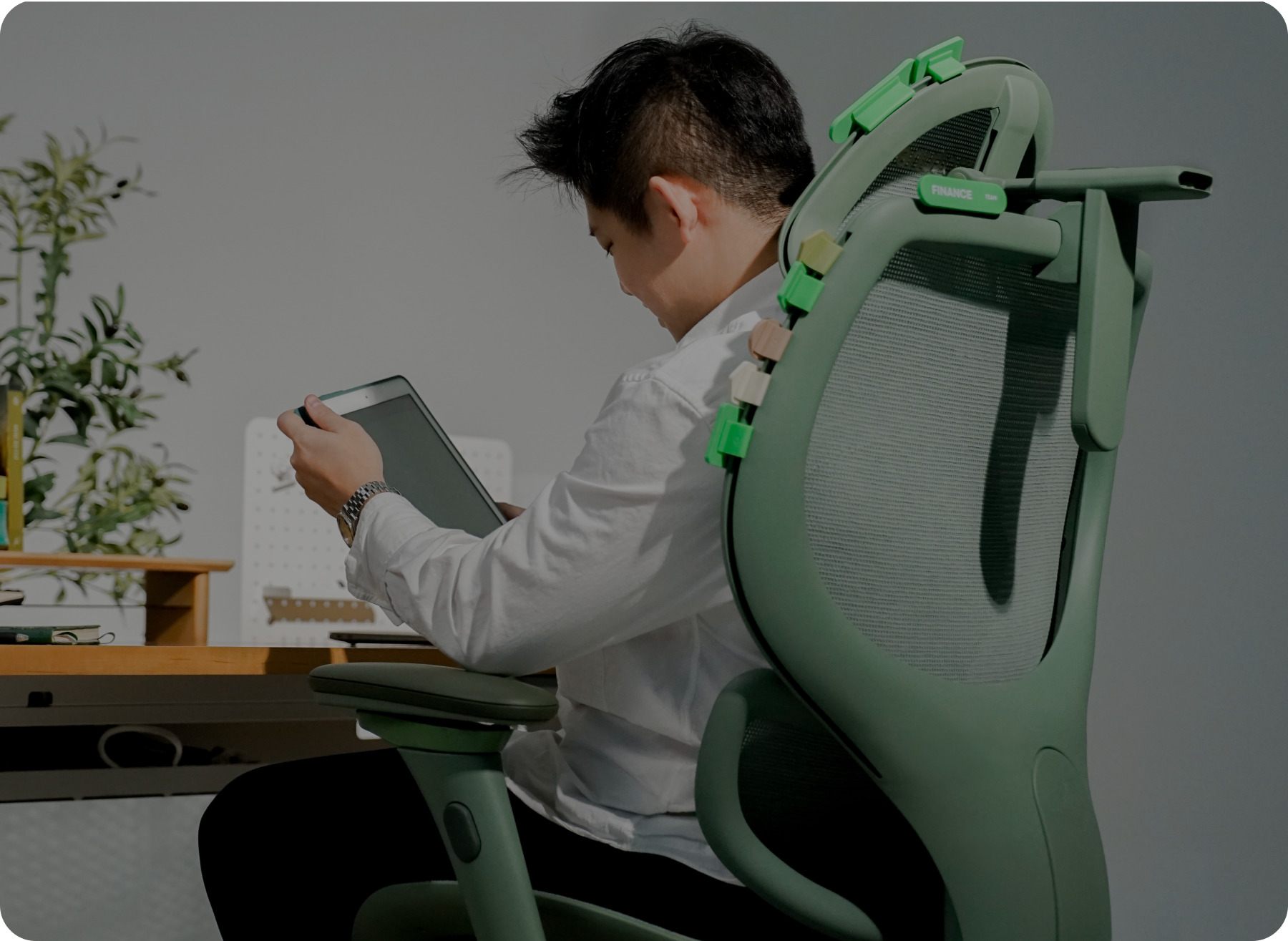
You've probably seen someone using an exercise ball as a work chair and thought "wow, maybe they're onto something here." Perhaps you've even thought of getting one for yourself. But wait, let's answer the important questions first. Is there any real benefit to sitting on a stability ball at work? And if there is, does it trump the proven advantages of sitting on an ergonomic office chair?
Today, we're going to settle the ergonomic chair vs ball debate. To help you determine which is the superior seating arrangement for you, we will go over the key features of both ergonomic office chairs and stability balls. After we consider the pros and cons of each option, you'll have no doubts left - and you'll be ready to start shopping.
What Exactly Makes a Chair "Ergonomic"?
An ergonomic office chair is designed to support the human body in the best way possible. By offering the best possible support, users enjoy enhancements to their posture, health, and productivity. An ergonomic office chair supports the natural S-shape of the spine, which allows for even distribution of weight and flexible mobility. For an office chair to be ergonomic, it has to have these key features:
Helps Improve Posture
Is it true that an ergonomic chair can help posture? Yes - one of the key parts of these chairs is lumbar support. This outward curve of the seat back fits into the C-shape of the lumbar spine, which is the medical term for your lower back. With lumbar support, it is easier to maintain the proper alignment of your spine. On a regular office chair, there is no lumbar support, which is why you'll be more inclined to slouch or lean forward.
But, the posture enhancements don't end at the lumbar spine. These types of chairs maintain your spine curve from top to bottom - all the way up through the thoracic and cervical spine. And, they do a lot more, too.
An ergonomic office chair is highly adjustable. You can adjust your chair to fit you like a second skin. For maximum comfort and support, you can modify the position of the armrests, the seat depth, the seat height, and the headrest. Here's what every adjustable part does for your body:
- Armrests. Your arms must be resting at 90 to 110 degrees at the elbow. Putting your arms in this position prevents tension from building on your shoulders and wrists. It also helps delay fatigue while you are typing for extended periods of time.
- Seat depth. To keep the tension off your knees and allow proper circulation in your legs, there must be 2 to 4 inches of distance between the edge of the seat and the back of your knees. Otherwise, your thighs and hips will start to hurt because the weight of your lower legs is hanging off of them.
- Seat height. A height-adjustable seat allows you to find the perfect height relative to the top of your desk. Also, your knees must be a little lower than your legs and at a 90-degree angle, with your feet flat on the floor. Sitting at the proper height is vital to avoiding lower back problems, carpal tunnel syndrome, and shoulder strain.
- Headrest. The headrests on ergonomic office chairs must be adjustable, both in-out and up-down. An adjustable headrest allows you to lean your head back and discourages you from leaning your head towards the computer screen.
Keeps You Pain-Free
Proper posture is key to avoiding work-related pains and aches. Prolonged sitting causes lower back pain, stiff neck, and shoulder aches. All of these problems stem from bad posture and prolonged sitting. While you may not be able to avoid prolonged sitting at your office job, you can certainly remain pain-free with a chair that feels like it was built just for you.
As mentioned above, the different parts of an ergonomic office chair keep your spine, arms, knees, and head in the proper position. So, when you sit in an ergonomic chair, your weight is distributed evenly throughout your body. This prevents tension from forming in the problem areas like your hips, back, and neck.
Promotes Productivity
When you're not distracted by the tension in your neck or the ache blooming in your lower spine, you are able to work more efficiently. Using an ergonomic chair helps keep you productive, allowing you to go through your tasks easily because you are focused and comfortable.
At the same time, you will also be less likely to make mistakes. After all, it is easier to focus when you are comfortable and pain-free.
Moreover, using an ergonomic chair helps prevent work-related injuries, which can force you to miss work and fall behind your deadlines. This is also the reason why ergonomic office furniture is a highly valuable investment for workplaces; when people are comfortable and supported, they are less likely to be absent because of pain.
Why Do People Sit On An Exercise Ball?
Now, let's talk about the exercise ball as a substitute for your regular office chair. Traditionally, an exercise ball is used to improve balance, cardio endurance, and core strength. Just by sitting on one, you are engaging your core and learning how to find your neutral spine position.
Because of these benefits, people thought "why not bring the exercise ball into the office?" If merely sitting on an exercise ball can reap balance and strength benefits, it would make a great office chair, right?
Well, using a stability ball as a chair can be beneficial--but not if you're sitting on it for the entire day.
When you are sitting on a stability ball, you are actively engaging your core muscles because you don't have support for your back. Plus, a stability ball can help you improve your balance and stability, which is great for your overall fitness.
But sitting on an exercise ball is not without its drawbacks.
Yes, sitting on an exercise ball helps strengthen your core. But keep in mind that you are also working. Most people tend to slouch over time because they forget about their posture on the ball. And if you're like most individuals, it can be very difficult to divide your focus between work and sitting with proper posture.
At the end of the day, you are in the office to work on your job - not your fitness levels. At a certain point, you will compromise on efficiency and productivity by sitting on a ball. You'll get physically tired faster than if you were sitting in a chair, which will show itself in your work, too.
Ergonomic Chair vs Ball - Which Is Better For You?
Now, you came here today to learn about sitting in an office chair versus sitting on an exercise ball. Which is better for your posture and productivity?
Hands down, an ergonomic chair is better for you than an exercise ball. First of all, you don't even have to think about maintaining proper posture on an ergonomic chair. If you're sitting on an exercise ball, you have to be mindful of your posture at all times to prevent slouching. Of course, that is almost impossible to do for the entire workday. Especially while remaining productive.
Both a stability ball and an ergonomic chair can help promote good posture. But one only does so for a few minutes. An ergonomic chair, on the other hand, can keep you in the correct posture for hours.
And good posture is everything! It helps prevent pain, reduces headaches, improves your breathing, and promotes better digestion, among many other benefits to both your physical and mental health. With an ergonomic chair, you are able to maintain the correct posture without any effort. Literally, all you have to do is sit!
Final Thoughts On The Ergonomic Chair vs Ball Debate
So, ergonomic chair vs exercise ball: who wins?
The answer is pretty obvious by now. Considering all the facts, an ergonomic chair is a superior seat. Stability balls are great workout tools, but they do not make great office chairs. So, leave that exercise ball at the gym and stick to an ergonomic work chair for maximum support!
At ErgoTune, you'll find the best selection of ergonomic chairs in Australia. Invest in yourself with a seat that fits you like a second skin - you deserve it.










